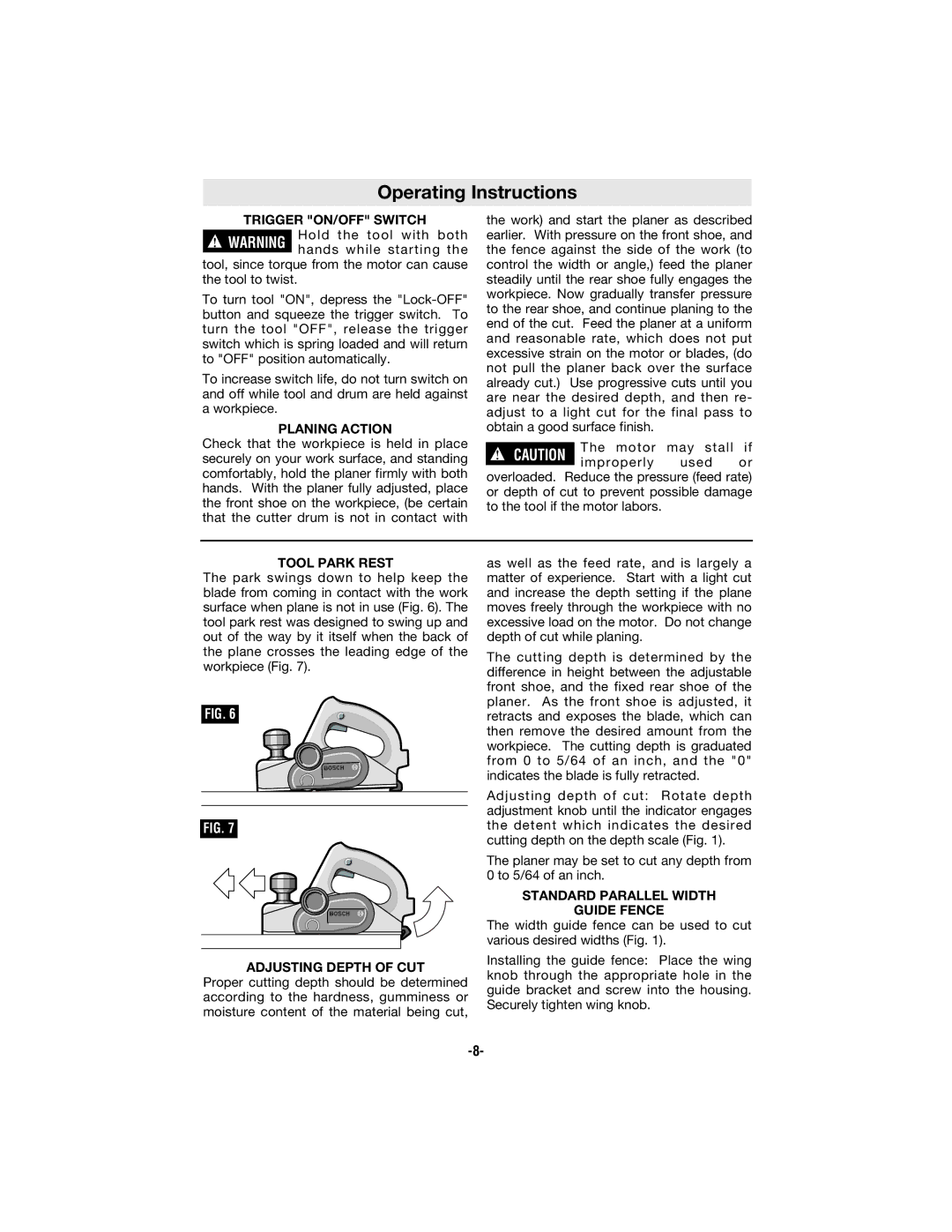
Operating Instructions
TRIGGER "ON/OFF" SWITCH
!WARNING Hold the tool with both hands while starting the
tool, since torque from the motor can cause the tool to twist.
To turn tool "ON", depress the
To increase switch life, do not turn switch on and off while tool and drum are held against a workpiece.
PLANING ACTION
Check that the workpiece is held in place securely on your work surface, and standing comfortably, hold the planer firmly with both hands. With the planer fully adjusted, place the front shoe on the workpiece, (be certain that the cutter drum is not in contact with
the work) and start the planer as described earlier. With pressure on the front shoe, and the fence against the side of the work (to control the width or angle,) feed the planer steadily until the rear shoe fully engages the workpiece. Now gradually transfer pressure to the rear shoe, and continue planing to the end of the cut. Feed the planer at a uniform and reasonable rate, which does not put excessive strain on the motor or blades, (do not pull the planer back over the surface already cut.) Use progressive cuts until you are near the desired depth, and then re- adjust to a light cut for the final pass to obtain a good surface finish.
The motor may stall if
improperly used or overloaded. Reduce the pressure (feed rate) or depth of cut to prevent possible damage to the tool if the motor labors.
TOOL PARK REST
The park swings down to help keep the blade from coming in contact with the work surface when plane is not in use (Fig. 6). The tool park rest was designed to swing up and out of the way by it itself when the back of the plane crosses the leading edge of the workpiece (Fig. 7).
FIG. 6
FIG. 7
ADJUSTING DEPTH OF CUT
Proper cutting depth should be determined according to the hardness, gumminess or moisture content of the material being cut,
as well as the feed rate, and is largely a matter of experience. Start with a light cut and increase the depth setting if the plane moves freely through the workpiece with no excessive load on the motor. Do not change depth of cut while planing.
The cutting depth is determined by the difference in height between the adjustable front shoe, and the fixed rear shoe of the planer. As the front shoe is adjusted, it retracts and exposes the blade, which can then remove the desired amount from the workpiece. The cutting depth is graduated from 0 to 5/64 of an inch, and the "0" indicates the blade is fully retracted.
Adjusting depth of cut: Rotate depth adjustment knob until the indicator engages the detent which indicates the desired cutting depth on the depth scale (Fig. 1).
The planer may be set to cut any depth from 0 to 5/64 of an inch.
STANDARD PARALLEL WIDTH
GUIDE FENCE
The width guide fence can be used to cut various desired widths (Fig. 1).
Installing the guide fence: Place the wing knob through the appropriate hole in the guide bracket and screw into the housing. Securely tighten wing knob.
